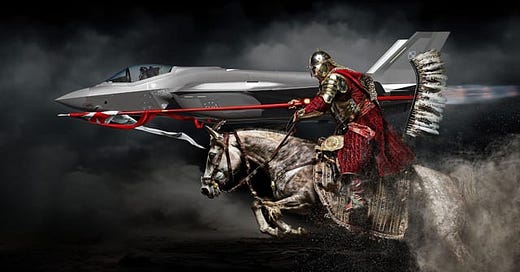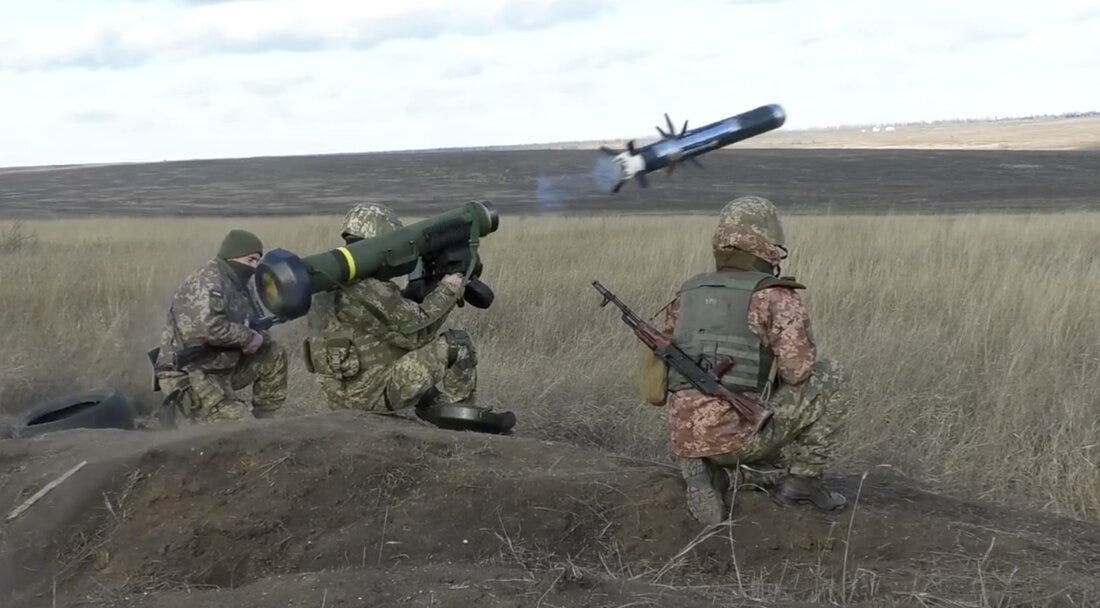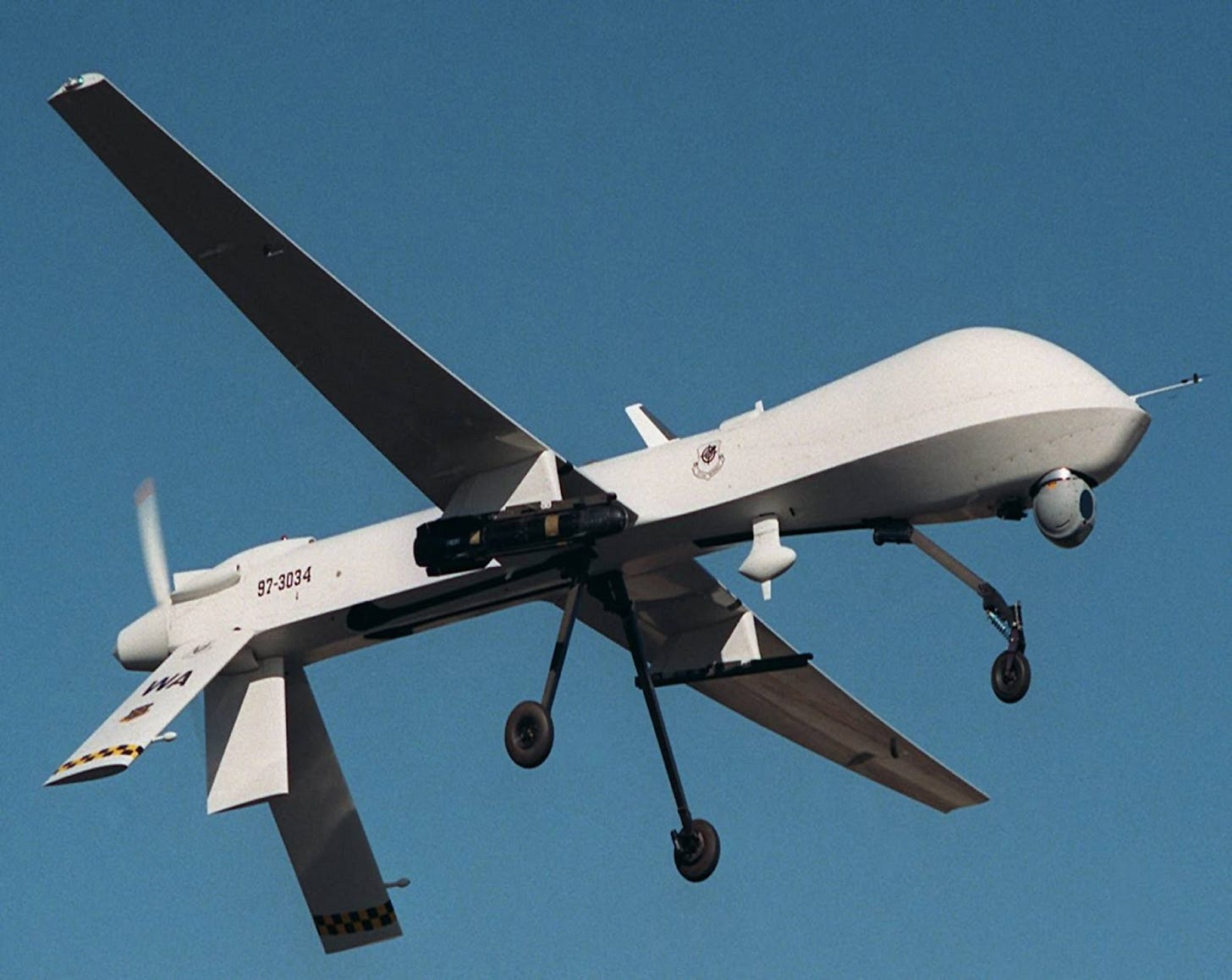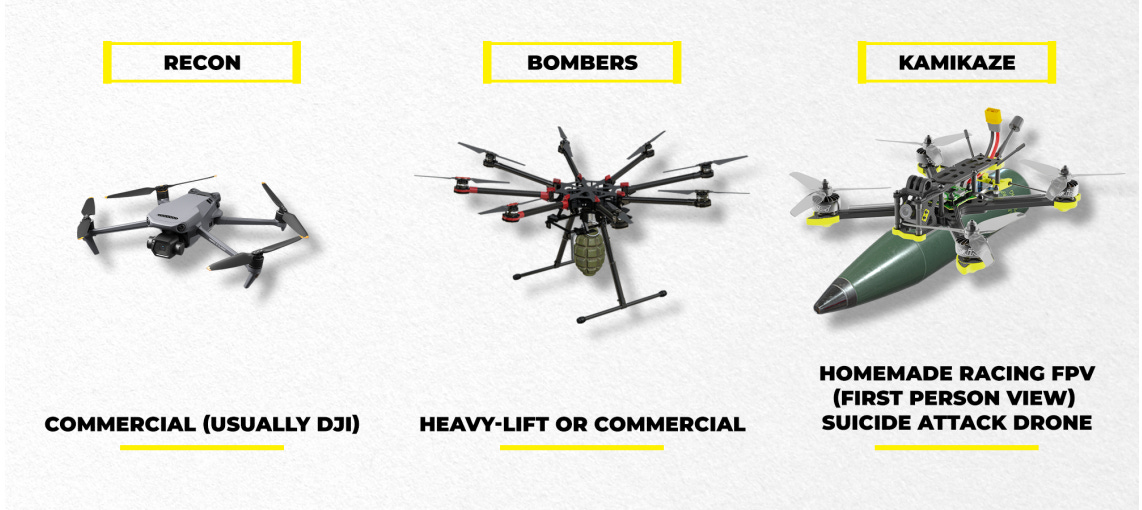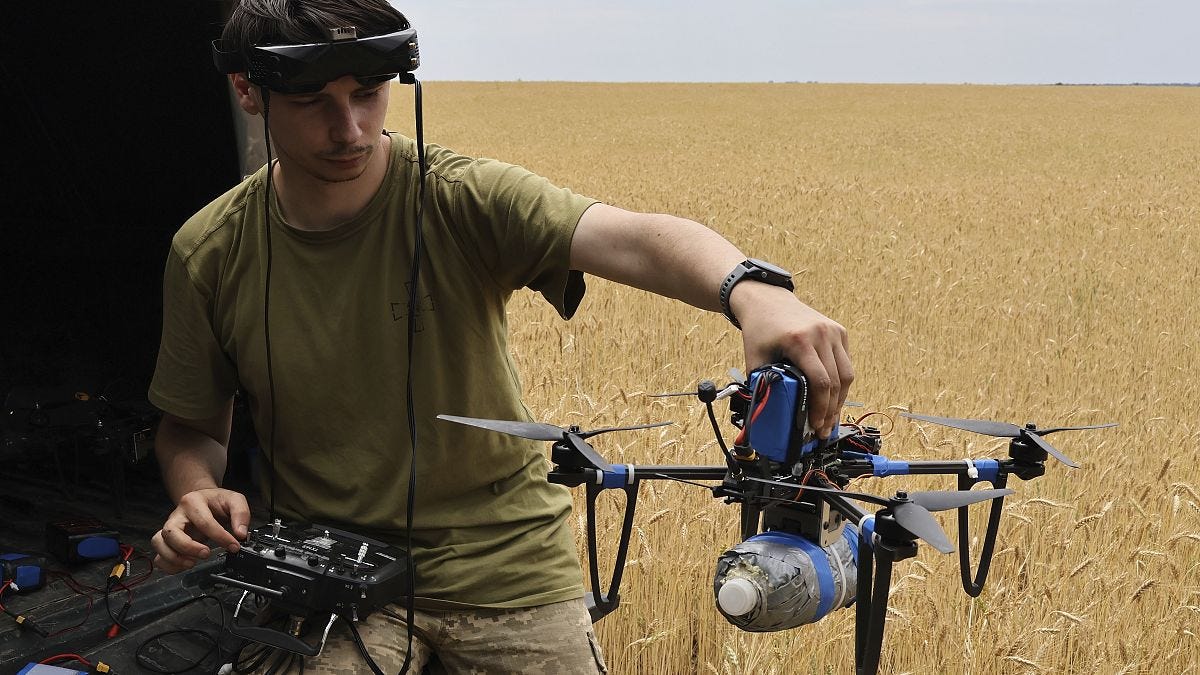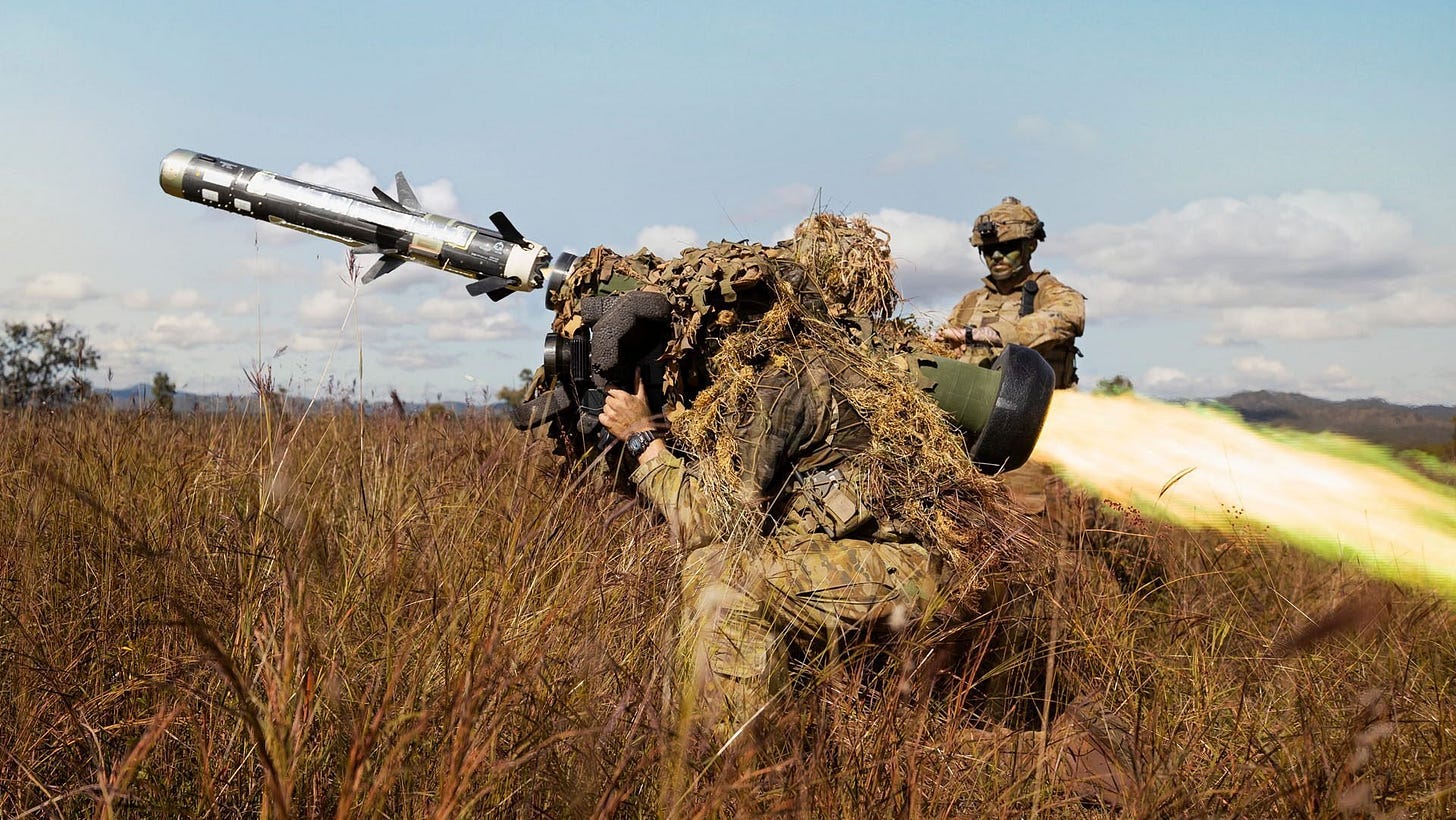The Economics of Warfare
How emerging technologies will shape war, and how you can profit from it
In the last two centuries, warfare has evolved from cavalry charges to tanks and stealth aircraft. Within this chaos, technological advancements have been made that have changed the lives of everyone. Modern medicine, for example, was sped up substantially as a result of WWI, so much so that death toll from the fighting may have been partially offset by the lives saved as a result of new medicine. Other advancements from the past century, from planes to GPS to the internet, were all developed first for military means. However, for the first time in recent memory, a new technology has been primarily used by the civilian industry first, before being repurposed for military means.
In the 1930s, the civil war in Spain saw the refinement of new military technology from the previous years of advancement.
Although many of these devices existed during WWI, the Spanish Civil War saw strategies more similar to the upcoming Second World War. While WWI saw the first dogfights, the Spanish Civil War saw the first use of mono-wing planes in combat. This trend can be found in almost every major global conflict, where a short time before it erupts, a smaller war occurs where much of the same technology is seen. It’s important to recognize that this is more a case of shared evolution rather than a direct connection, as it mostly shows the potential uses of these new technologies in an actual combat scenario.
While the time since the Second World War hasn’t entirely been peaceful, the Cold War and following Middle Eastern conflicts have resulted in nearly a century since the great powers of the world have engaged in direct conflict or a conventional war has been experienced by the US. Because of the Middle Eastern conflicts, our military technology has been geared towards fighting an enemy in a guerrilla war. While this means many things, one often overlooked aspect of this type of war is how we have essentially ignored the economic effectiveness of our military industry. To be clear, I am not saying that Uncle Same is being overly generous, because as everyone knows, our government loves spending money.
However, because in Afghanistan and Iraq, we have known with unquestionable doubt that they cannot outproduce our war machine in terms of raw output, there has been significantly less pressure to make the absolute best decisions in terms of cost/benefit. The entire GDP of Iraq is about ⅓ of our annual defense budget, so we can afford to try things out. This has resulted in experiments like the Littoral class of warships, costing us billions in development for what is essentially a worse version of a cruiser that costs twice the price.
While our military-industrial complex is no doubt the best in the world, it has been a long time since we have had to compete against another country close to our level of wealth and influence. It should also be noted that against the Soviets, the last time this competition could be seen, we were behind them in output for many years. While our technology is advanced, we shouldn’t forget that we won WWII with worse tanks than the Germans simply because we could outproduce them in quantity. War, at the end of the day, can be summed up into a series of budgets, where the winner will almost always be the country that can produce a technology that can get the most results for the price. So essentially you are trying to find the most economically efficient product, not necessarily the best.
However, for those economically minded, this can be taken advantage of if you can predict what this new technology will be, as once the shooting starts it becomes plainly apparent what works and what doesn’t. If you want to find out what the new technology is, just look at current conflicts. Out of conflicts in the world right now I would mostly focus on the Ukrainian-Russian conflict for two reasons.
It is a conventional war, compared with mostly assymetric warfare in the Middle East
Historically, weapons funding from foreign powers is good at keeping a region difficult to hold by the aggressor, but it doesn’t usually stop occupations (Observe the Middle East). However, in this conflict we have seen Ukraine, the definitive underdog, not only hold off Russia for years on end but launch successful counter-invasions and deplete Russian resources enough that they have been forced to rely on other honorable allies for equipment and manpower (Iran and North Korea)
In this conflict, I can see two pieces of equipment that will define warfare for the next period.
Handheld Heavy ordinance
Although it has existed for some time, personnel carried heavy weaponry hasn’t seen much active use for decades as the conflicts in the Middle East where the terrorist groups rarely had much in the way of armored vehicles, which most of this weapon class is designed to fight.
Now that it has been unleashed into an actual combat situation, it has been proven an incredible tank killer. According to journalist Jack Murphy, the Javelin missile has seen over 280 confirmed kills of armored vehicles, out of 300 shots. This is a 93% kill rate.
The Javelin missile system, developed and sold by Raytheon Corporation, goes for approximately ¼ million per unit. While this seems to go against my point of finding cheap products, everything is situational. While this seems expensive, the Javelin allows a group of infantry to take out main battle tanks, bunkers, artillery positions, and other targets. If you are trying to determine the true cost of something in war, you need to find out:
What did the damage cost the enemy
What did the weapon cost you
What would an alternative have cost
For the Javelin, it gets an attractive return on value on a per-use basis, where it has already been proven to be reliable and effective in destroying targets. Javelin targets such as tanks will cost the enemy millions to produce, easily earning back the $250,000 it costs to produce. Additionally, because it is smaller, transporting these weapons to the frontlines is cheaper than alternatives.
While tanks and heavy artillery still hold an important position in warfare, I expect them to be utilized less and less. The Marine Corps has recently given up its tank division for lighter troop carriers, and I expect them to become a major buyer of this missile system. The point of the Marine Corps is to be the first ones on the battlefield and move fast. Additionally, it is a well known fact that every Marien is first and foremost a rifleman, regardless of secondary roles. For this reason, a system like the Javelin is incredibly well suited for the Marines, as it allows them to take out more armored targets without being tied down by the limited mobility of heavily armored vehicles and artillery.
The Javelin missile system allows operators to stay on the move and reposition before the missile's impact, again geared towards being operated by small groups of infantry.
If you are looking to invest in handheld ordinance such as the Javelin, its producer, Raytheon Corporation (Formerly Raytheon Technologies), is a good place to start. The Javelin is going to be the primary weapon in this genre of ordinance utilized by the US military and her allies going into this generation of weapons, and currently, Raytheon is the top producer in the military-industrial complex for this type of product. Raytheon is up 67.91% this year with a market cap of $163.95 billion.
Drones
One of the standout performers in the war in Ukraine has been the widespread use of drone technology. These types of drones have been different from the preexisting military drones.
The first confirmed instance of armed US military-operated drones was in 2001 during the invasion of Afghanistan when the CIA operated MQ-1 Predator drones carrying anti-tank weaponry.
Later the MQ-9 Reaper drone was released with an increased weapon capacity but similar purposes.
These weapons, while powerful, do not take advantage of the true advantage of drone technologies: they are not people. The absolute best thing about a drone over a person is they are truly a disposable soldier. However, the design of these drones is such that they are a weaker version of a human-occupied plane in many aspects. Additionally, they cost tens of millions of dollars to purchase, not including the costs of running it. This takes away from them being expendable and encourages their safe return to base.
Let’s compare this to the Ukrainian drones. While Ukraine does use drones with similar purposes in small numbers, they also operate much smaller drones in the thousands.
These drones are typically homemade or modified commercial drones. Unlike larger drones like the MQ-9 Reaper, they aren’t geared towards taking out heavy targets, but instead, excel against infantry combat and low-range surveillance. They are also portable due to their small size, so much so that they can be deployed by front-line troops.
Their true advantage can be found instead in their low cost. Instead of costing in the millions, almost all of these drones can be purchased for low thousands and much less for the kamikaze drones that aren’t meant to return (around $300 per unit) The commercial drone industry has existed for long enough that you can get drones with relatively advanced technology for low prices.
In my opinion, this is the best use of drones on the battlefield. It essentially gives infantry the use of air support entirely on their own, which not only increases their arsenal but also gives them air support much faster than it would otherwise arrive. While it may only take a few minutes for the heavy munitions to arrive, drones can be put up into the air in around 30 seconds. Additionally, supplying infantry units with drones allows the more traditional modes of air support to be prepared to respond to larger threats, as they don’t need to spend as much time bailing out infantry.
Economically, the low cost of these drones is incredible, especially when you consider just how expensive it is to operate military planes. Not only do they cost tens or hundreds of millions to buy, but the munitions can be hundreds of thousands of dollars per unit. That is also not including the cost per-flight hour and repairs needed, which add on significant additional costs.
Yet another advantage of drones in combat is economically, it is almost impossible to be on the losing end. That is because of the simple fact that almost every method of shooting down drones simply is expensive. While this isn’t an issue against multi-million dollar MQ-9 Reapers, against a $600 suicide drone almost every countermeasure costs more than the drone does, and is more difficult to replace than the drone that was shot down. Right now, in the Middle East Iraqi and Iranian drones are being launched against Israel, and although almost all of them are being shot down, we are shooting down drones that cost at most a few thousand dollars with missiles that can cost hundreds of thousands.
I believe that this might be a new type of drone warfare, where it is simply a battle of attrition. If you can make drones faster than the enemy can produce the countermeasures, they will simply be overwhelmed. A new technology that may even the battlefield in this regard is the use of lasers against these drones, which can burn through the outer shell and fry the interior circuits. One big advantage of this is that once built, operating a laser is simply just not that expensive, so it earns you back the advantage economically. The thought has occurred to me that one could just coat the entire drone in a reflective mirror.
While it seems overly simple, mirrors can reflect around 99.9% of visible light, and since lasers are just concentrated light, this would, in theory, work. While lasers would still work against a drone coated like this, it would require an exponentially more powerful laser, which could be difficult to produce.
While there are other ways to disable drones such as disrupting the signal to the operator, my point is this: You don’t need to win with drones. Because you don’t care if the drone survives, it makes countering the countermeasures simple. Your only goal in protecting the drone is really to just make it more costly for the enemy to destroy it so you can win economically. Since again, drones aren’t people, there is great value in beating your opponent economically, because if you can do that, every single time you launch a drone against the enemy you can guarantee that a victory against them in some way.
If you're looking to invest in these types of drones, I have a few suggestions. One defense company that looks promising for these types of drones would be Andurial Industries.
They are currently working on a series of drones called “Bolt” drones, a recon drone that doubles as a kamikaze attack drone. These models do not have an exact price on them as of yet, but according to leadership at Anduril, it is expected to go in the low tens of thousands. While certainly an improvement and headed in the right direction, I think that this type of drone can ultimately go for under $1,000, as evidenced by the drones in Ukraine. For mass adoption by the military, the most important thing is how simple it is to operate, since the low ranges of these drones mean the operators will have to be frontline fighters instead of someone whose only job is to operate drones.
The Andurial models seem to satisfy this requirement, and I particularly like how it is both a recon and attack drone. Andurial Industries isn’t currently a publicly traded company, however, should they IPO their technologies have significant potential.
Another idea for investing in this technology would be looking at pre-existing consumer drone companies. Many consumer drones can be modified into combat drones for military purposes with little modification, as seen in Ukraine. While I don’t have a specific company in mind considering the top drone manufacturer for consumer drones used in Ukraine, DJI, is a privately owned Chinese company, I think that this angle does have potential. To the end of investing in drones, I would recommend you keep your eyes open for announcements from defense companies for low-cost drones.
If you are looking to invest in something today, I would recommend Red Cat (RCAT). They produce drones based off a swarm-warfare strategy, where the idea is simply to get the most drones in the air as possible. It is currently a very small company, but their product and technology are good. They are currently in the news for supplying the National Guard with drones to help cleanup with hurricane Milton. This use of the drones will be an important benchmark on how viable they are in real world for potential buyers of their drones.
Red Cat has a market cap of $262 million, and has a wide array of systems intended for both recon and strikes. Currently in development is their FANG drone, a small FPV drone intended for lethal strikes with a range of 3 kilometers.
Red Cat has been performing well this year and has potential for growth in the near future, especially if the performance of the drones for hurricane Milton mets expectations.
If you are interested in seeing a proof of concept for drones, I was considering making a prototype drone. It would be a recon and bomber/suicide drone with the main goal being low cost. (Bomber/Sucide part would just be attached weights such that it could be replaced with ordinance. Obviously, I am not making a bomb.)
I think this would be interesting because if a 16-year-old can build something like this for a low price, I have no doubt a multi-billion dollar defense company would struggle to. Share your thoughts in the comments below if you like the idea.
Conclusion
Based on the current conflict zones throughout the world, I believe the next generation of warfare will see an increased reliance on infantry-operated systems such as the Javelin and drones. It allows these smaller groups of what would otherwise be just riflemen to essentially become their own army, with recon, air support, and artillery capable of taking out fortified positions and vehicles without compromising on mobility.
This is based heavily on the concept of war being in many ways, a competition between two groups to beat the other economically. The use of these new technologies allows a country to destroy targets of significantly higher costs to replace than the resources used to destroy them. For today, I would take a look at Raytheon and Red Cat to invest in these new methods of war.

